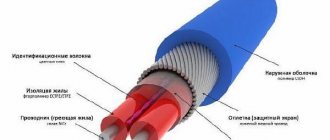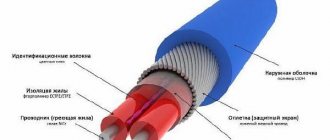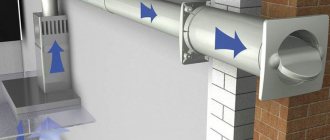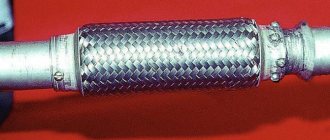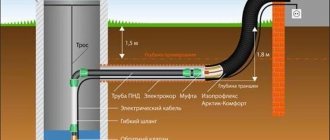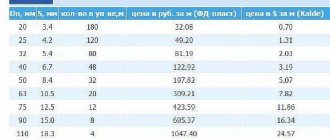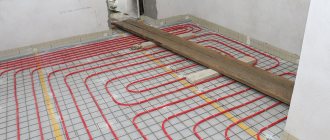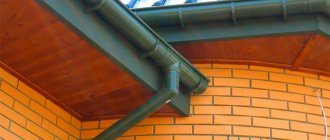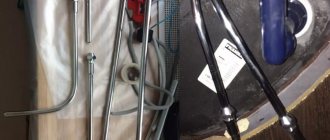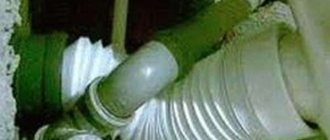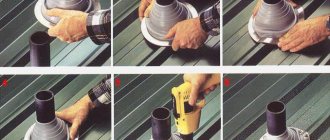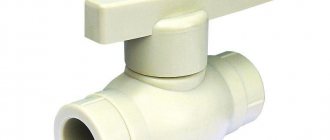There are many reasons why it is advisable to hide electrical wires in a corrugated sleeve:
If there is a need to install cables in walls made of flammable materials or under finishes prone to fire, it is necessary to take corrugated cables with a non-combustible sheath.
When electrical wiring is covered with finishing material, there is a risk of subsequently damaging the cable, for example when drilling holes. Hard shell corrugation reduces the likelihood of damage.
If the cable is installed under the floor or in a screed, protection is provided from compression or damage while maintaining the ability to be quickly replaced.
For external wiring, an outdoor cable corrugation is used. It should have increased protection from damage and exposure to weather factors.
If the gasket is open, then you should pay attention to heat resistance and immunity to sunlight. Aerial installation involves the use of a reinforced product. When carrying out work at the underground installation site, waterproof rigid corrugation is used.
Types and types of corrugated pipes
Cable corrugation is distinguished according to the following parameters:
- Diameter.
- Wall thickness.
- Materials used.
- Blossom.
- Resistant to loads.
The flexibility of the corrugation and its stability depend on the thickness of the walls and the material from which it is made. The conditions under which it can be used depend on the materials used.
Classification by material and its main characteristics:
- PVC is the most common option. Non-flammable and relatively cheap corrugation for wiring. When exposed to UV radiation, it is destroyed, which imposes restrictions on outdoor use.
- Polyethylene and polypropylene (PPR). There are corrugated pipes made of low-pressure polyethylene (LDPE) and high-pressure polyethylene (LDPE). Operated in a temperature range from -40 to +45 degrees Celsius. Resistant to UV rays, acids, oils and solvents. They are distinguished by color: black and two-layer red - polyethylene, and blue - polypropylene.
- Metal corrugation. It is also called a metal hose. They provide good cable protection from mechanical damage. Resistant to active substances and oils.
Interesting! The marking of metal hoses is deciphered as follows: RZ-Ts, RZ-TsKh, RZ-TsA - made of galvanized steel; RZ-SL and RZ-SL-X - made of tinned steel tape; RZ-CP – with PVC insulation, for sealing.
Based on the number of layers, they are distinguished:
- Single layer. PVC sleeves most often consist of just one layer, and its thickness can be different.
- Double layer. An example is a double-wall HDPE pipe.
Load resistance:
- Lightweight (up to 320 N/5 cm2) – the walls are thin and flexible. They are installed on suspended ceilings and in plasterboard structures.
- Medium (up to 750 N / 5 cm2) - placed in a groove.
- Heavy (withstand up to 1250 N/5 cm2) - the toughest, laid in concrete screeds.
- Extra heavy reinforced (up to 4000 N/5 cm2 and above). They are laid underground or suspended on supports for outdoor installation.
Another factor is the types of corrugation in color. This is not fixed by regulation, but usually gray and white corrugations are made of PVC, red, black and blue are made of polyethylene. There are also colored models, it depends on what dye is added to the mass during production. You can use specific colors for each line type:
- White – lighting and internet.
- Gray or black – sockets, general purpose circuits.
- Green – information cables and telephony.
- Red – for external use.
In practice, such a division does not occur often.
The thickness of the corrugated wall is in the range of 5-15 mm. The outer diameter for PVC corrugation is in the range of 16-50 mm. Below is a detailed table showing the size range of cable corrugations.
| Outside diameter | Inner diameter |
| 16 | 10.7 |
| 20 | 14.1 |
| 25 | 18.3 |
| 32 | 24.5 |
| 40 | 31.5 |
| 50 | 39.6 |
Size range of metal hoses:
| Outside diameter | Inner diameter |
| 9.8 | 5.1 |
| 11.0 | 7.7 |
| 13.5 | 9.7 |
| 15.6 | 11.7 |
| 19.0 | 14.7 |
| 22.0 | 18.0 |
| 38.0 | 31.5 |
| 45.0 | 37.5 |
| 58.0 | 49.5 |
| 71.5 | 62.5 |
| 87.5 | 78.0 |
There are also options with and without a probe. The probe is often called a wire puller. This is a thin steel wire to which wires are tied and with its help the wiring is pulled into the sleeve. This is especially convenient when using conductors with flexible stranded cores.
What is the difference between PVC and LDPE corrugated pipes
The main difference between corrugated PVC pipes is their ability to self-extinguish, which is absent in products made from high-density polyethylene (LDPE). They do not ignite when exposed to an open flame, so they are used:
- To protect electrical cables from mechanical stress.
- To prevent the spread of fire into rooms during a short circuit.
However, LDPE corrugation is more frost-resistant, does not emit toxic substances when heated and is used for open installation on the street, as well as in concrete and brick structures.
Composition and dimensions of corrugated pipe.
The corrugated pipe consists of two layers of polymer material - outer and inner. The outer layer is corrugated low-density polyethylene . The inner layer is high-density polyethylene, which is specially made smooth. A smooth surface from the inside is needed so that the corrugation does not fray and can last longer.
The diameter of the corrugation can be varied. It all depends on what cable or wires you use. Basically, cable corrugations are sold in diameters from 16 to 63 millimeters. As for the length of the corrugation, everything depends on its diameter. The larger the diameter, the shorter the length of the corrugation in one skein. Most often, corrugation is sold in lengths of 25 meters or more.
Advantages of plastic corrugation and features of its use
Plastic corrugated pipes have many advantages and disadvantages:
— Ease of installation, which, in turn, allows you to lay the cable as quickly as possible. The steel probe, which is located inside the pipe, significantly speeds up and facilitates cable pulling.
— Corrugated pipe is very flexible, which allows it to be laid in hard-to-reach places and not to use connectors and turns during installation.
— Corrugated pipes are very cheap compared to other cable pulling methods. But you can save even more if you use pipes without an internal probe. But it is worth noting that this will complicate the work a little and extend the laying time.
— Such pipes do not conduct electricity; they are good insulators.
— The pipes are heat-resistant, that is, if a fire occurs inside the pipe, the fire will not be able to penetrate further.
To install corrugated pipes, special clips are used, which are divided into several types:
- regular clips
- snap clips
- clips with clamp
- clips with latch and dowel
When laying wiring in the ground, there are certain features in the choice of corrugated pipes. In this case, it would be advisable to use special HDPE corrugation, which differs from other types of pipes in its high strength and the possibility of their use in concrete, in air, and in soil. HDPE corrugated material is very resistant to moisture and ultraviolet radiation. The temperature range of such a pipe is quite wide, from -40 to +90 degrees. Corrugated plastic pipes can be used at temperatures from -5 to +60 degrees.
Application area
PVC corrugation is mainly used as cable ducts when installing electrical, computer, telephone and television networks.
Corrugated products of larger diameter are used for:
- Cold water supply.
- Gravity sewer pipelines.
- Storm sewer.
Drainage systems are constructed from perforated elements.
Which corrugation to choose
To figure out which corrugated pipe to buy: HDPE or PVC, let’s look at typical applications for different types of corrugation.
PVC is suitable for:
- Laying external wiring in a wooden house.
- For connecting electrical wiring of lamps in suspended ceilings and behind plastic and gypsum board panels.
- Electrical installation in the bathhouse, bathroom and other places with high humidity.
- It is the most common and is most often used when installing in an apartment or house.
- For outdoor use, but provided that direct sunlight is minimized.
Maintenance Tips
Electrical corrugated PVC tube does not require constant maintenance; it is enough to make sure that it is not exposed to ultraviolet radiation or too low temperatures.
But sewer lines can become clogged over time. Therefore, maintenance of PVC corrugated pipe systems mainly involves preventing blockages. For these purposes, they must be cleaned regularly using chemicals. Communications should also be periodically subjected to hydrodynamic cleaning, which involves supplying steam or water under high pressure to the internal space of the pipeline.
What to look for when purchasing
First of all, having already decided on the material of the corrugated pipe, you need to carefully study the letter markings and color.
So, for a metal hose, the presence of the letter “X” in the name means the presence of a cotton seal, “A” – asbestos-cement, “P” – additional polyvinyl chloride insulation.
In addition, steel hoses may have flanges and ends for welding at the ends, which is useful during installation.
The color of the corrugation will tell you about the purpose of the pipe, since the standard approves the matching colors of cables and pipes suitable for them.
| Color | Purpose |
| gray or black | general. |
| white | computer networks. |
| green | telephone lines. |
| red | external street laying. |
When routing cables, it is convenient to rely on color standards - all directions are immediately visible. But paying attention to color is also important for another reason - uneven coloring means poor quality of the pipe material.
To simplify installation, manufacturers often supply corrugated hoses with a broach - a special bundle that simplifies pulling the cable through the channel. The price of such corrugation will be higher. Also, when purchasing, you should check the availability of the necessary accessories: clamps, clips, tape for installation.
Specifications
Parameters to consider when purchasing pipes:
- external, internal diameter;
- bay size (length);
- corrugation color - some technical features depend on this indicator;
- insulation resistance;
- specific gravity;
- permissible temperature range for normal operation;
- protection class;
- strength indicator.
Any technical characteristics for finished products are prescribed in certain government documents. Manufacturers must strictly comply with GOST in order for their products to reach the market.
Pipes of different diameters (Photo: Instagram / polimersyntez)
Do-it-yourself corrugation installation. Step-by-step instruction
When carrying out installation of wiring in the corrugation, adhere to the following procedure:
- Design. At this stage, they determine how each sleeve will go, where there will be turns, the need for materials is determined, and purchases are made.
- Preparation of grooves and fastenings for laying routes.
- Fastening the corrugation, inserting it into the distribution boxes.
- Pulling the cable.
The cable is pulled using a cable or wire passed through a sleeve. Pull carefully, avoiding sudden jerks (otherwise the cable will come off or the cable will be damaged). To prevent the cable from coming off, it is additionally secured with tape.
Features of installation and dismantling
Installation of cable networks using corrugated PVC pipes has a number of features.
To avoid difficult moments during the work process, adhere to the following algorithm of actions:
- Calculate the dimensions of the wiring and measure the required amount of corrugated pipe with a tape measure.
- Using a sharp knife, cut pieces of corrugation to the required length. To shorten the broach, use side cutters or wire cutters, holding the edge with your hand so that it does not jump inside the product.
- Pull the wiring through the corrugated pipe. To do this, fasten the broach to the cable. This can be done in one of two ways: carefully bend the wire with a hook, breaking through the edge of the insulating material, or wrap it several times around the wire. Then fix the free end of the cable to a stationary object, which will create tension for more convenient pulling it through the corrugation.
- Secure the corrugation to the surface of the building structure using plastic clips or mounting tape so that there is no sagging. On long sections of the network, it is necessary to install transit boxes used to connect sections of corrugated pipes. In this case, the edge of the pipes must fit into the body of the box so that the wire itself does not remain visible.
Varieties based on material of manufacture
Corrugated tubes for electrical cables are made of metal or special plastic. Corrugations made from the following materials are widely used in construction:
Polyvinyl choride (PVC) is a lightweight material with self-extinguishing properties. Corrugations made from this material are made in gray color. PVC corrugated cables are used in dry indoor areas, as they are sensitive to ultraviolet radiation and are not waterproof. They are most widespread due to their availability (low price) and versatility of use.
Polypropylene (PPR) is a material that does not support or propagate combustion and is resistant to ultraviolet radiation. Corrugations made from this material are waterproof and are used when laying networks outdoors or in rooms with high humidity. The color of these corrugations is blue.
Low-density polyethylene (HDPE) is a moisture-resistant material. Such tubes are also used in damp rooms or outdoors. HDPE is a flammable material, so it is not used in wooden premises. The use of corrugated HDPE in screeds or in structures made of non-combustible materials is permitted. Available in orange or black.
Stainless steel is the most durable and expensive material for the manufacture of corrugated tubes. It is resistant when used in aggressive environments and perfectly protects the cable from mechanical damage (for example, from rodents or accidental damage during construction and repair work). They are used both indoors on flammable and non-flammable materials, inside structures, and outdoors for underground or overhead cable laying.
Polyamide (PA) is a very flexible material that is resistant to mechanical and chemical influences. Has a wide operating temperature range (from -60 to + 150 degrees Celsius). Corrugated tubes made of this material do not propagate combustion and can be used both inside and outside buildings. Produced in dark gray color.
Advantages and disadvantages
This type of corrugated pipes has many advantages. These include:
- Absolute corrosion resistance.
- Wind and waterproof.
- Non-flammability. PVC does not ignite when exposed to open fire, but melts.
- Dielectric properties.
- Flexibility and lightness, allowing you to save on the number of connecting elements, supporting structures made of reinforcement and transportation.
- Inertness towards aggressive chemicals.
- Large selection of diameters.
- Low price. The cost of PVC corrugation is significantly lower than similar products made from other materials.
- Durability. PVC pipes can be used without losing their original properties for at least 50 years.
Disadvantages of PVC:
- Shows poor resistance to ultraviolet radiation.
- Releases harmful substances at operating temperatures above 45 ºС.
- Becomes brittle when exposed to low temperatures.
Materials for production
There are two main materials used in the production of corrugated casing - metal and plastic. Modifications are possible:
- Polypropylene. This plastic corrugation is blue in color, does not participate in combustion, and is also self-extinguishing. Due to its moisture resistance, it can be used outdoors and at high humidity indoors.
- Polyvinyl chloride pipes have a gray tint, are self-extinguishing, but are only applicable in dry rooms.
- Low pressure polyethylene hoses can be orange or black. They are flammable, so they are used only on non-flammable surfaces - in screeds or after gating. Can be used outdoors.
- Metal structures made of stainless or galvanized steel. They are resistant to mechanical and chemical factors and are non-flammable. It is advisable to use it outdoors or in objects with a high risk of fire.
Connection methods
There are three ways to connect corrugated PVC pipes:
- Coupling. For joining, fixed couplings with rubber seals are used. Suitable for connecting individual pipeline elements at turns or for joining elements made of different materials.
- Cold welding. A special chemical composition is applied to the joints of individual pipeline elements. The materials soften and the parts fit together. They are held motionless for 20 minutes so that the adhesive composition hardens.
- Bell-shaped A method used for the manufacture of sewer channels and cold water supply pipelines. The individual elements are connected using a special rubber gasket.
The choice of method for connecting the tubes depends on the purpose of the pipeline.
Coupling method of joining
Corrugated pipe for electrical wiring (Corrugation). Types and applications
Corrugated pipe protects electrical wires from damage factors. It prevents fire from spreading when wires catch fire. The corrugation provides auxiliary cable insulation. This protects a person from electric shock if the cable insulation is faulty.
A corrugated pipe is a pipe with a variable cross section. Sections of short length with a small diameter and thin walls alternate with sections of large diameter and thick walls. Areas with thick walls impart rigidity in the direction of the shear force. Thin sections provide flexibility and stretchability.
Corrugated pipe is made of plastic, although there are also metal pipe options. It is used in ventilation, air ducts, hoods, plumbing, and air conditioners. For installation work on laying cables, electrical corrugation made of PVC is used.
Corrugation material
- Polyamide – reliably protects against moisture.
- High pressure polyethylene – for 2-layer corrugation.
- Polyvinyl chloride is a non-flammable substance.
- Polypropylene – for monolithic construction.
- Low pressure polyethylene – high flexibility.
There are also metal corrugations. It is resistant to low temperatures and more resistant to breakage. The negative aspects are the tendency to oxidation, moisture penetration, and conductivity. Stainless steel pipes for cables are rarely used due to their high price.
Types of corrugation
The corrugated hose is made of an empty tube with an original cross-sectional shape that protects the wires from moisture and fractures. The product went on sale recently.
A corrugated pipe looks like an alternation of rings of different thicknesses and diameters. In a longitudinal section, the tube looks like a comb. This design gives it rigidity in the transverse direction. The outer rings have a dense structure. Flexibility is ensured by thin inner rings.
Corrugations differ in design features:
- 1-layer, the wall inside is the base.
- 2-layer, corrugated and flexible tube.
Double-layer corrugated pipe is produced for several wires or for one. In the multi-wire version, the inner tube is divided into cells.
According to the design, the corrugation is divided into classes:
- Lightweight, thin-walled, flexible. For installing cables under the casing.
- Reinforced - thick-walled, heavy, durable. For street wiring, underground, in concrete.
Corrugated electrical pipe
A cross-section of electrical corrugation shows us a rectangular profile. It is made of polyvinyl chloride, a rigid material. Electric corrugation has low tensile strength, but with increased flexibility, especially thin-size ones.
A special feature of corrugations for electrical wiring is the presence of steel wire inside the tube along its entire length. The wire is needed for the convenience of pulling wires and harnesses into the tube. The color range of electrical corrugation is very wide. Foreign manufacturers produce it in a variety of colors.
When choosing corrugations for wires in a store, you need to know that the diameter size is indicated as the outer one. It differs with the internal diameter; you can easily confuse the tube size. It is better to make a calculation in advance so as not to be deceived. It is easy to calculate the required corrugation diameter. The wires are placed in a piece of tube so that the internal volume is half free, this is the diameter needed. The most common diameters are 16-50 mm, but there are others. The length of the corrugation in the coil depends on the diameter of the tube. The larger the diameter, the shorter the length of the coil.
Corrugation properties
Tips for choosing
Corrugated PVC pipe is available in a wide range of standard sizes, among which you can find a suitable option to suit the requirements of operating conditions.
As a protective casing in cable systems, you should choose a product with such a diameter that the wire is located freely and does not touch its walls, namely:
- Tubes Ø 16 mm - needed for wires supplying current to the lamps.
- Ø 20 mm - will be required when installing circuit closing and breaking devices (sockets, switches), television cables, computer wiring.
- Ø 25 mm - for connecting distribution boxes.
- Ø 32 mm - connecting network between electrical panels.
- Ø 40-60 mm - used as an industrial hose for interfloor wiring.
approximate cost
Purchasing a plastic corrugated pipe will not greatly impact the family budget. On average, the price of one meter of PVC corrugation for electrical work will be from 15 to 20 rubles. A two-layer sewer pipe for household systems, depending on the diameter, will cost 216-650 rubles per meter.
The best domestic and foreign manufacturing companies
The largest manufacturers of PVC corrugated pipes in Russia, whose products meet European quality standards:
- Ekoplast Company LLC produces a wide range of materials for electrical work, including corrugated PVC pipe of the “L” and “T” series, with and without a probe.
- JSC "Rufinil" - the production of plastic corrugation is based on modern technologies and high-quality raw materials. The range of products includes products made of PVC, LDPE and HDPE with a diameter of 16-63 mm.
- — produces only corrugated PVC pipes with a diameter of 16-55 mm, light and heavy, with and without a probe.
- "Tyumen Corrugated Pipe Plant" - pipe products of various diameters made of polyvinyl chloride.
Among the foreign manufacturers specializing in the production of high-quality pipe products from plastic, the following companies can be distinguished:
- Pexay.
- Wawin.
- Ostendorf.
- PIPELIFE International GmbH (Pragma corrugation).
- Polieco (products under the Corsys Pro brand).
